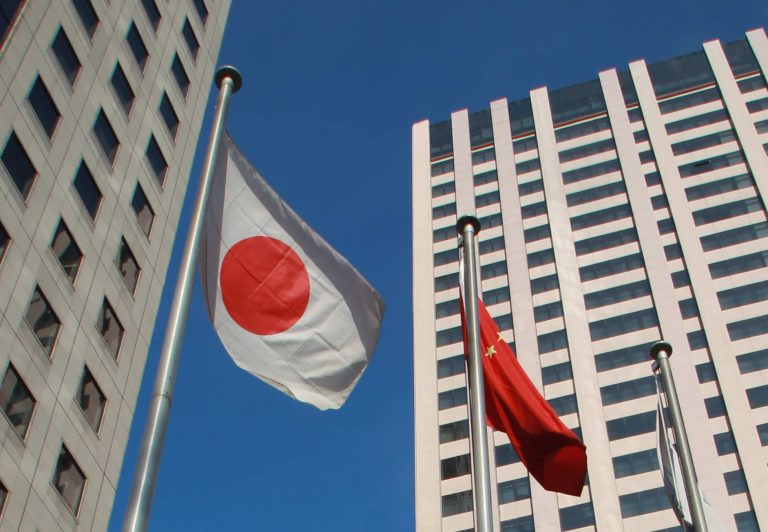In a bid to eliminate its dependence on China for rare earth metals, Japan is expected to begin mining the seabed off its coast for the crucial elements sometime this year.
China currently dominates global production of rare earth metals. According to United States Geological Survey (USGS) data, the communist nation was responsible for 70 percent of the world’s production of rare earths in 2022, and refined 89 percent of the world’s neodymium and praseodymium, key elements required for the production of EV magnets.
In early 2023, Japan relied on China for roughly 60 percent of its rare earth consumption. However, if everything goes to plan, Japan intends to be self-sufficient in this sector by the end of the decade, greatly reducing or completely eliminating its dependence on China.
In late 2022, Japan issued a new National Security Strategy document stating that “with regard to supply chain resilience, Japan will curb excessive dependence on specific countries,” without naming China directly. In addition, the document states that the country intends to “secure stable supply for critical goods including rare earth, and promote capital reinforcement of private enterprises with critical goods and technologies, and strengthen the function of policy-based finance, in pursuit of protecting and nurturing critical goods.”
Rare earth metals are a group of 17 elements vital for the production of a number of technologies, including semiconductors, solar panels, electric vehicle batteries and practically every consumer electronic.
Success
You are now signed up for our newsletter
Success
Check your email to complete sign up
Japan has been eyeing the precious metals off its coast for some time. In late August and early September of 2022, the country succeeded in extracting rare earths from the seabed from a depth of nearly 2,500 meters, or over 8,200 feet, in the waters near Minami-Torishima.
Researchers believe that there are hundreds of years worth of rare earth materials in Japanese waters, enough to supply the world on a “semi-infinite basis,” according to a 2018 study published in Nature.
Accessing these resources could not only eliminate Japan’s dependence on China, but could upend the entire global market.
READ MORE:
- Artistic Freedom Under Siege: New Report Exposes the CCP’s Widespread Censorship and Oppression of Falun Gong, Shen Yun
- Devastating Earthquake Strikes Japan on New Year’s Day as Frantic Search for Survivors Begins
- The Latest Victims of China’s Surveillance State
China imposes stringent new regulations
In recent years, Chinese communist authorities have gone to great lengths to protect its near monopoly on rare earth production, and as recently as Dec. 2023 imposed stringent new regulations on the export of key technologies for their extraction, refining and processing.
On Dec. 21 last year, China issued a revised “Catalog of Technologies Prohibited or Restricted from Export,” modifying what technologies are prohibited from export, including technologies related to the extraction, processing, refining and use of rare earth.
Specifically, the export list now “features ion-type rare earth ore leaching processes, as well as mining, beneficiation (the treatment of raw material in preparation for smelting), and smelting technologies for rare earths, inclusive of synthesis processes and formulas for rare earth extractants, and metal material modification technologies using rare earths,” the Epoch Times reported.
A few months earlier, in July 2023, China implemented export controls on two crucial rare earths, gallium and germanium, critical elements used in the production of semiconductors, 5G devices and solar panels.
At the time, analysts at Jefferies Group, one of the world’s leading investment banking and capital markets firms said, “We see this as China’s second, and much bigger, counter measure to the tech war, and likely a response to the potential U.S. tightening of [its] chip ban.”
In October, 2022, the U.S. Commerce Department implemented new rules that severely curbed the export of certain advanced chips to China, fearing they could be used by Chinese communist authorities to advance its military and artificial intelligence ambitions.
At the time, Sujai Shivakumar, an analyst at the Center for International and Strategic Studies in Washington said the U.S. bans were “perhaps the most expansive export control in decades.”
Industry insiders also speculate that China’s export controls on gallium and germanium may very well backfire, as it could lead to other nations developing their own sources of the precious materials, much like what is occurring with rare earths on the globe’s ocean floors.
READ MORE:
- US Navy Sailor Sentenced to 27 Months for Siphoning American Military Info to the CCP
- Under Beijing’s Shadow, Taiwan Heads to the Polls to Elect a New President and Parliament
- Simmering Tensions: China Sanctions 5 US Defense Firms Over Arms Sales to Taiwan
Norway legalizes deep-sea mining
On Jan. 11, Norway’s parliament voted to allow deep-sea mining for rare earths, and other raw materials, in the Norwegian Sea.
The Norwegian government has identified an area of approximately 127,000-square-miles, roughly the size of Italy, where the sea-bed is now legal to mine.
The area is situated in international waters along Norway’s continental shelf, however Norway has recognized jurisdiction over the area.
Deposits of magnesium, cobalt, copper, nickel and other raw materials have been identified in the waters, elements the government says will play a crucial role in Norway’s ambitions for a “green transition.”
Astrid Bergmål, Norway’s state secretary for the energy ministry, told Mongabay, “We need to cut 55 percent of our emissions by 2030, and we also need to cut the rest of our emissions after 2030. So, the reason for us to look into seabed materials is the large amount of critical minerals that will be needed for many years.”
However, Peter Haugan, policy director of Norway’s Institute of Marine Research and the director of the Geophysical Institute at the University of Bergen, is concerned about the ecological impact the mining may have.
“Destroying very sensitive and vulnerable areas and eliminating biodiversity … is a real risk,” he told Mongabay, adding that, “It’s a really sad day for Norway.”
Haugan says that Norway’s decision to allow the mining may very well be illegal, due to a lack of evidence required to determine the environmental impacts the mining activities could have, which he says was legally needed for the decision to be made.

















